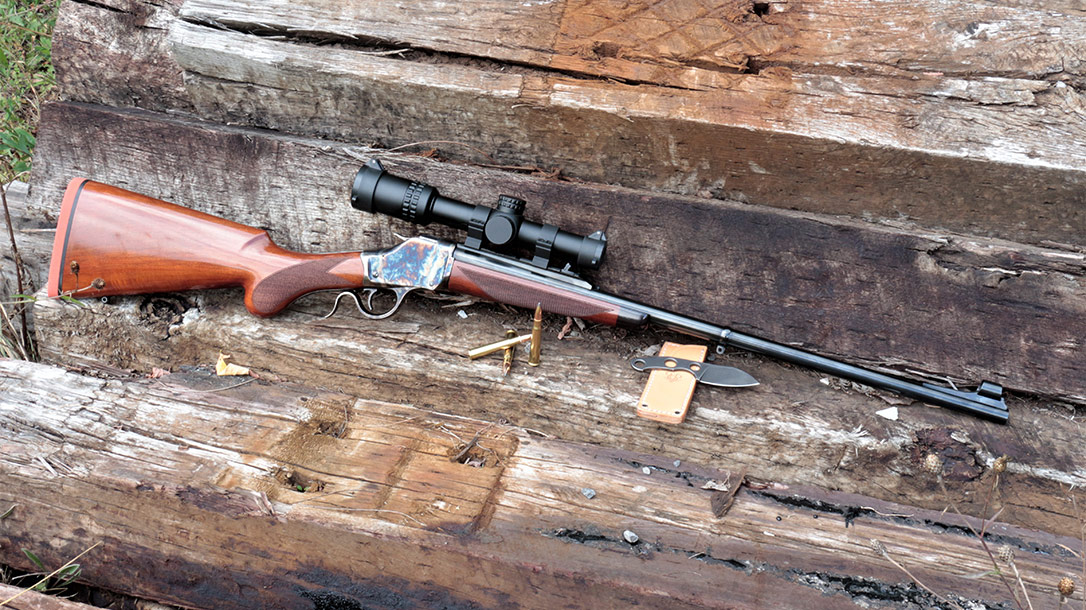It is elegant, rugged in its simplicity, effective on medium-size game and recalls a great era in history. The Uberti 1885 Courteney Stalking Rifle displays all of those attributes and more. It is based on the Winchester 1885 High Wall falling-block, single-shot rifle. That rifle came into prominence as the American West was becoming not so “wild.” But this Uberti replica is styled after British sporting rifles of the same era, when adventurers were challenging another great frontier for hunting and exploration: Africa.
The Uberti 1885 Courteney Stalking Rifle
The Uberti 1885 Courteney Stalking Rifle has a proud heritage. In 1883, a representative of the Winchester Repeating Arms Company traveled to Ogden, Utah, to negotiate a deal with a young arms maker, John Moses Browning.
We immediately associate Browning with the Colt 1911 pistol, Winchester 1897 shotgun, several great Winchester lever-action rifles and all of the military arms he had a hand in designing. But it was a single-shot rifle—eventually to become the Model 1885—that first brought the names Browning and Winchester together. Incidentally, that initial deal also included Browning’s design for what was to become the 1886 lever-action rifle.
Advertisement — Continue Reading Below
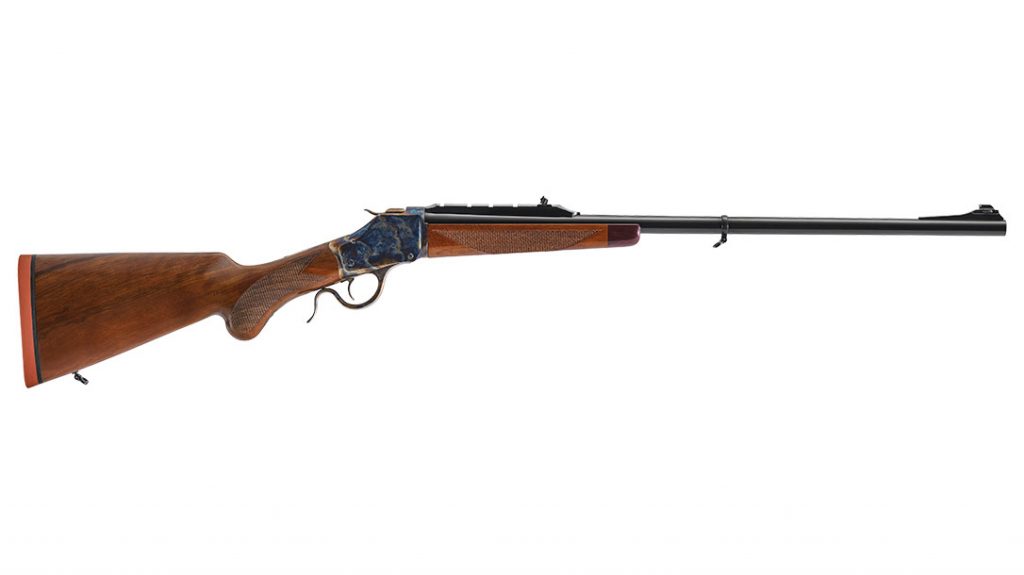
Winchester introduced the 1885 rifle at a time when long-barreled, single-shot rifles dominated the long-range shooting scene. This is when that was an extremely popular sport the first time around. The 1885 was a great success. It featured a super-strong action, safe, reliable operation and excellent accuracy. Winchester made about 140,000 of the High Wall and smaller-caliber Low Wall models between 1885 and 1920, chambered for more cartridges than any other Winchester rifle.
Uberti’s Namesake
This Uberti rifle name is in honor of British adventurer Frederick Courteney Selous (1851-1917). Selous spent most of his life in Africa as a big-game hunter, explorer, expedition guide, soldier, naturalist, conservationist and author. He was good friends with another big-game hunter, our own Theodore Roosevelt.
Advertisement — Continue Reading Below
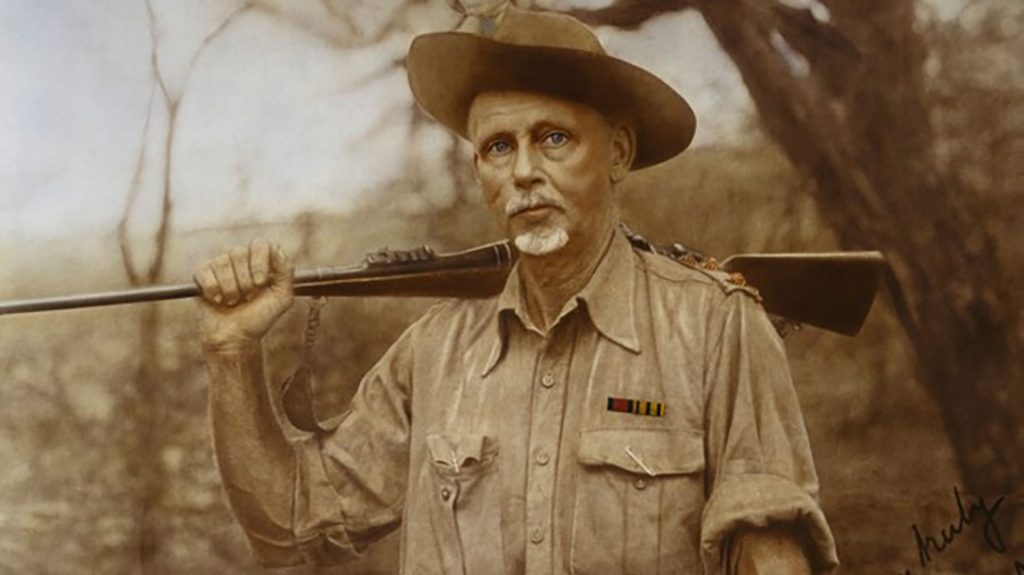
Many believe Selous is the real-life inspiration behind the character Allan Quatermain of King Solomon’s Mines. This is in addition to other fictional works of Sir Henry Rider Haggard. Amazingly, Selous died fighting as a British soldier at the age of 65 against German colonists in Africa during World War I.
No, Selous did not carry a Winchester 1885 as far as we know. But later in his career, he did favor single-shot, falling block rifles—the .461-caliber Gibbs-Farquharson and at least three Holland & Holland rifles (with Holland-Woodward action). He ordered H&H rifles chambered for .256 Mannlicher, .303 British (later rebarreled for .375) and .375 H&H. Those falling blocks featured an internal hammer compared to the exposed hammer of the Winchester 1885.
Advertisement — Continue Reading Below
Uberti’s British Accent
So, the Uberti 1885 Courteney Stalking Rifle is a rifle made in Italy, based on a U.S. design, but with a heavy British accent. Unlike the original long-barreled 1885 rifles, this replica has a shorter, hunter-friendly 24-inch barrel and an overall length of 37.5 inches. It carries well balanced atop your shoulder as your eyes scan the brush for crouching lions.
The Prince of Wales buttstock has the distinct rounded grip. African heartwood caps the tapered forend. The barrel has a nice bluing, and the receiver has a deep color case-hardened finish that is very well done. There’s a quarter-rib optics rail with integral shallow “V” adjustable rear sight. The ramp front sight with brass bead features a hood. Topping off the classic look is the barrel-mounted sling swivel stud.
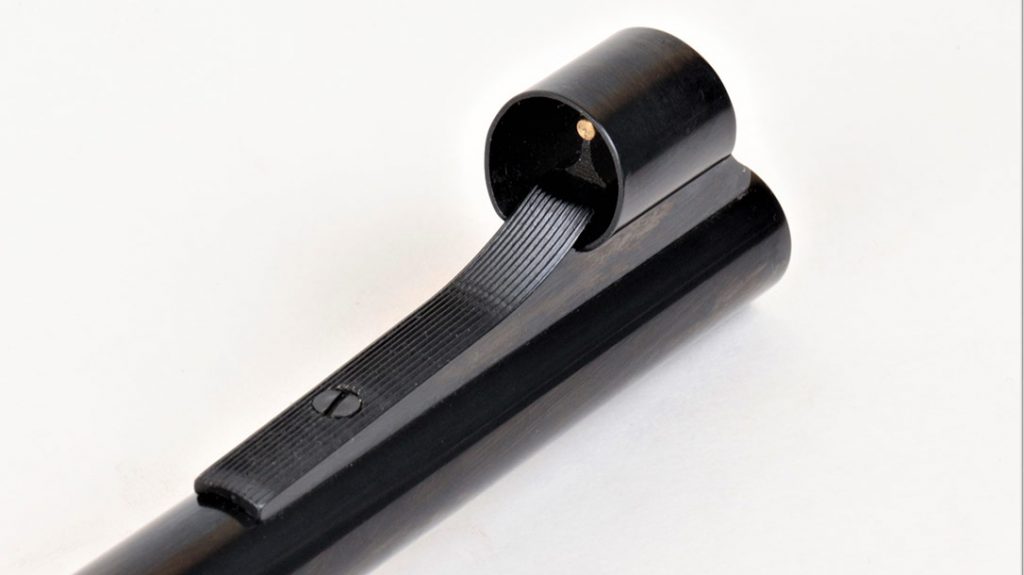
Advertisement — Continue Reading Below
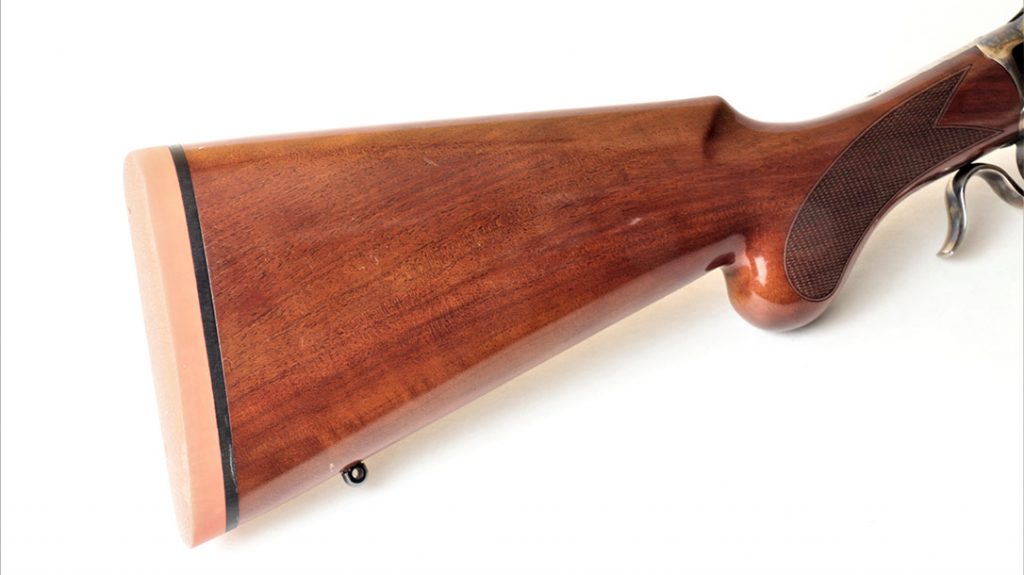
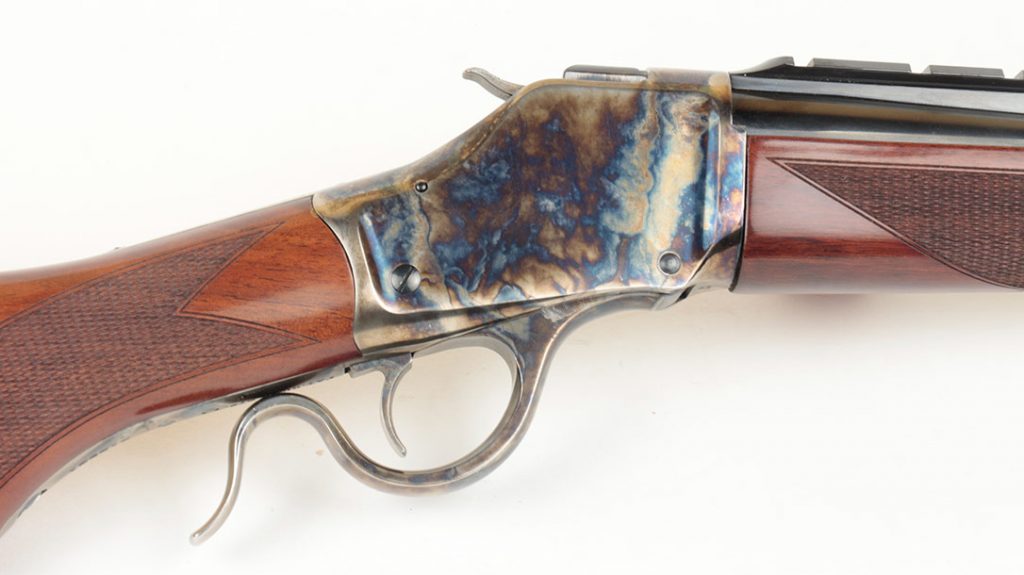
.303 British
Naturally, if you’re going to have a mid-bore rifle reminiscent of what British adventurers might have carried, you have to chamber it in .303 British. That cartridge has a long, rich history and—important for a replica today—several manufacturers offer modern loadings for the cartridge.
Advertisement — Continue Reading Below
The .303 British was originally a blackpowder cartridge put into service by the British military in 1888 for use in the Lee-Metford rifle. It was converted to smokeless powder cartridge in 1891 and the rifles were updated with Enfield rifling. Despite its obsolete rimmed case, the .303 remained in service through both world wars and into the 1950s.
Originally loaded with a 215-grain, round-nose bullet, the British eventually settled on a 174-grain spitzer bullet. With the availability of surplus rifles for many years, the .303 British was typical for hunting all but the largest game.
Ammo Acquisition
A few years ago, I had a chance to test the then-new Uberti 1885 High Wall Big Game rifle in .45-70. At the time, I regretted not buying it. So, I was anxious to see what I could do with the fancier Courteney Stalking Rifle.
Advertisement — Continue Reading Below
I mounted a 1-6x scope on the rifle. That scope, from Skinner Sights, features a 30mm tube and reticle with a bullet drop compensator. A 1-MOA red dot illuminate it. It’s a good, low-power scope for the still hunting I do in thick cover and it’s a good match for the fast-handling Uberti.
At the time I tested this rifle, there was a nationwide shortage of ammo. I didn’t think that would be an issue with the .303 British because it’s not a mainstream choice these days. I was wrong. Most places I checked were “out of stock.” I did manage to get two jacketed soft point loads of Federal Premium ammo, 150-grain and 180-grain.
To expand the ammo selection for this test, I handloaded both Speer 150-grain Soft-Cor and Woodleigh 174-grain soft points over Winchester 760 powder. I used a Redding Reloading turret press and Redding dies. I’ve come to trust Redding’s consistent quality and I can tap into their expertise with a simple phone call, especially when loading less-common cartridges. In the past, they helped me with .44-40 cowboy loads and another time with 7.62×25 Tokarev loads for a Polish version of the TT-33 pistol.
Advertisement — Continue Reading Below
Shooting Impressions
Loading and unloading the falling block is easy. You open the action by lowering the lever that extends from the rear of the triggerguard. When closing the action, the hammer automatically moves to the half-cock notch. That eliminates the need to lower the hammer over a loaded chamber and the possibility of fumbling the hammer in the process.
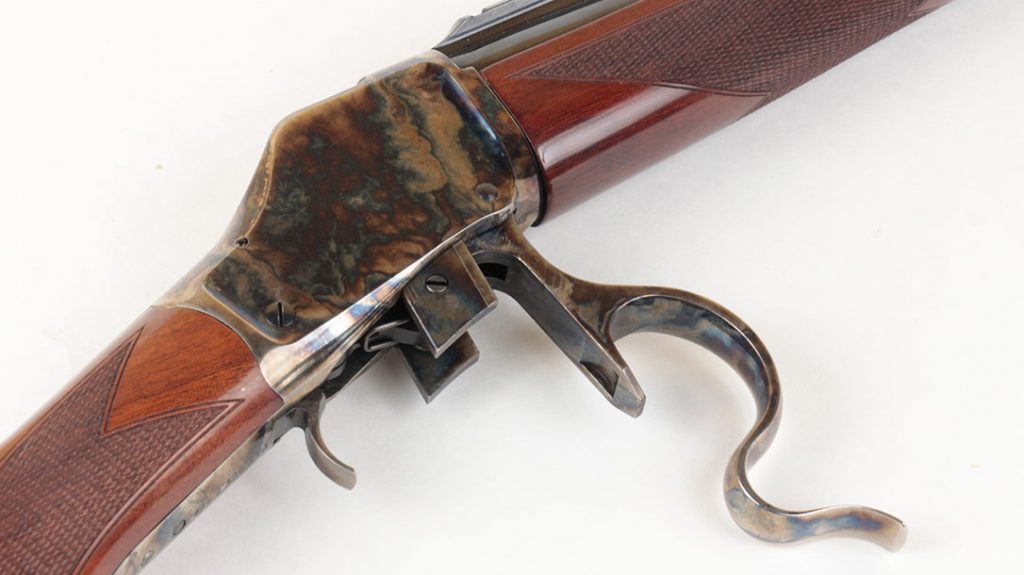
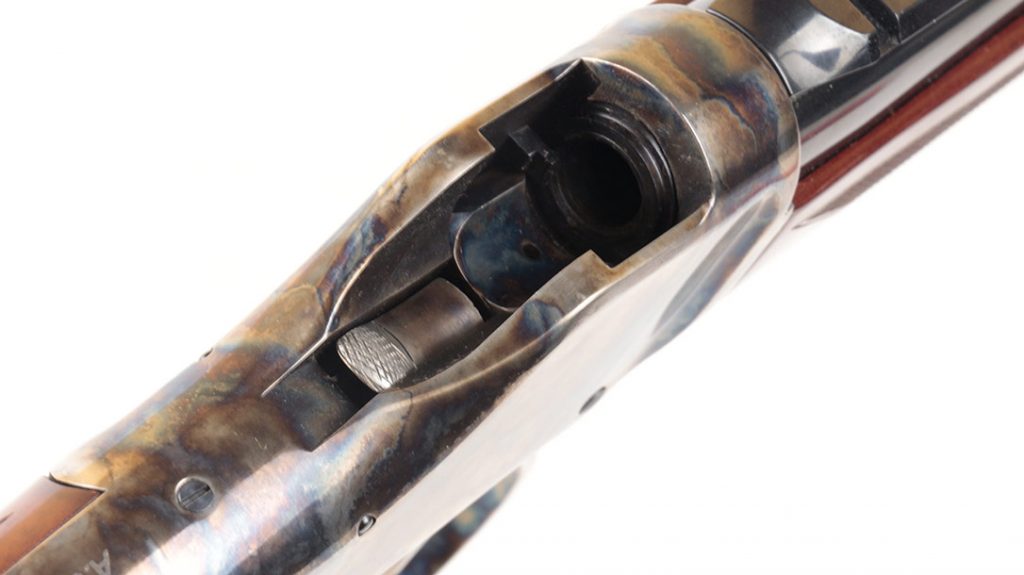
Advertisement — Continue Reading Below
Opening the action fast and firmly, fully extracts the casing. After firing a few rounds, I was purposely gentler with the action. In that way, the casing was extracted, but stayed on the receiver where I could pluck it off without having to search for the brass on the ground later.
The rubber recoil pad on the stock did a good job of handling the recoil as I shot the Uberti while standing unsupported. Recoil with the .303 isn’t harsh anyway. I measured the velocities of the cartridges using a MagnetoSpeed chronograph strapped to the barrel. Since this was my first time loading the .303, I kept my handloads mild. The velocities ranged from 2,302 feet per second for my 174-grain handload to 2,671 for the Federal 150-grain load. The trigger on the Uberti was good. It broke cleanly, and I measured the trigger pull at 4 pounds.
Accuracy
I did run into a problem when I moved to the bench to test the rifle’s accuracy. After shooting a couple of good groups, suddenly my shots were all over the target. My scope rings were tight, but I discovered the base that came on the gun had loosened. I thought a couple drops of Loctite on the screws would remedy the situation, but I found I couldn’t tighten two of the four screws that held the base. They’d spin, but not hold. I’ve never had problems with any Uberti firearms in the past. I’m sure they’ll solve the one issue with this gun.
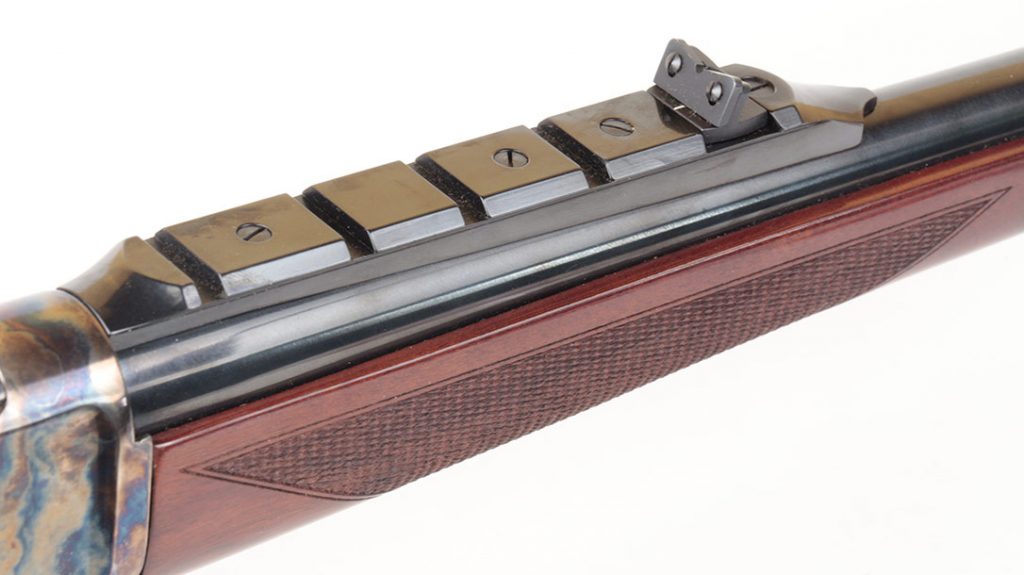
As a result, I shortened my testing, but not before I got an indication that this rifle is capable of fine accuracy. At 100 yards, I got three-shot groups ranging from 1.0 inch to 1.5 inches. I feel I could have done better with a scope that had higher than 6x magnification. But I wanted to shoot the gun the way I’d set it up for my own hunting use and I wouldn’t change that decision.
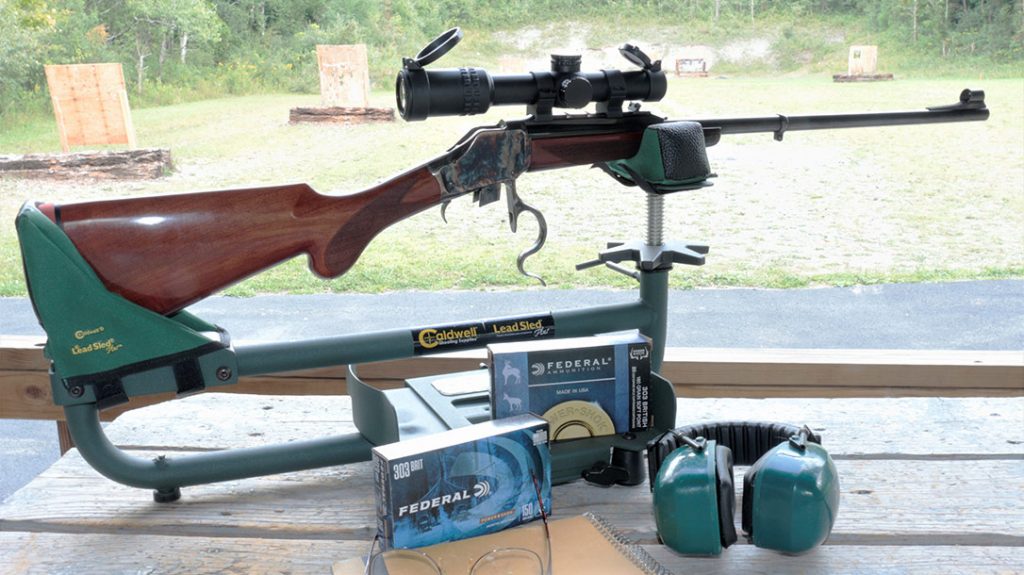
More Than a Shooter
There are plenty of firearms out there with fine accuracy and game-taking ability. You get that with the Uberti 1885 Courteney Stalking rifle. And the .303 British is a mild-shooting cartridge that’s fine for medium-size game.
But with this rifle you also get the romance and adventure of Old West hunts, African safaris and long-range competitions—things to daydream about as you wait for that whitetail buck to show up. And it all fits into one beautiful package that’s certain to turn some heads at the range. The rifle isn’t British, but I think Frederick Courteney Selous would approve nonetheless.
For more information visit: Uberti-USA.com.
This article was originally published in the Guns of the Old West Spring 2021 issue. Subscription is available in print and digital editions at OutdoorGroupStore.com. Or call 1-800-284-5668, or email subscriptions@athlonmediagroup.com.
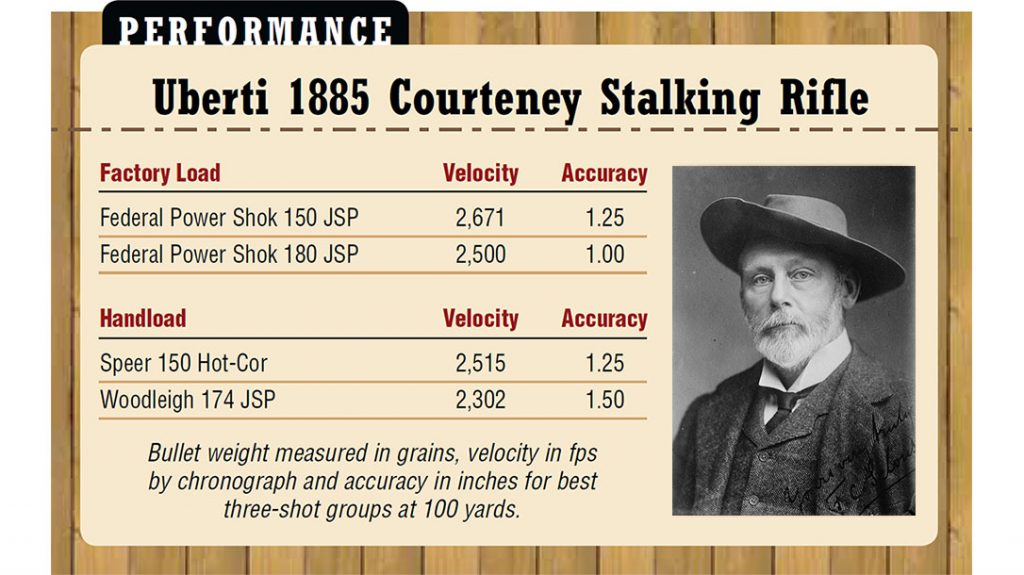
Uberti 1885 Courteney Stalking Rifle Specs
Caliber: .303 British
Barrel: 24 inches
OA Length: 37½ inches
Weight: 7.1 pounds
Stock: A-grade walnut
Sights: Shallow “V” rear, hooded ramp front
Action: Falling block
Finish: Blued barrel, color case-hardened receiver
Capacity: 1
MSRP: $1,729
